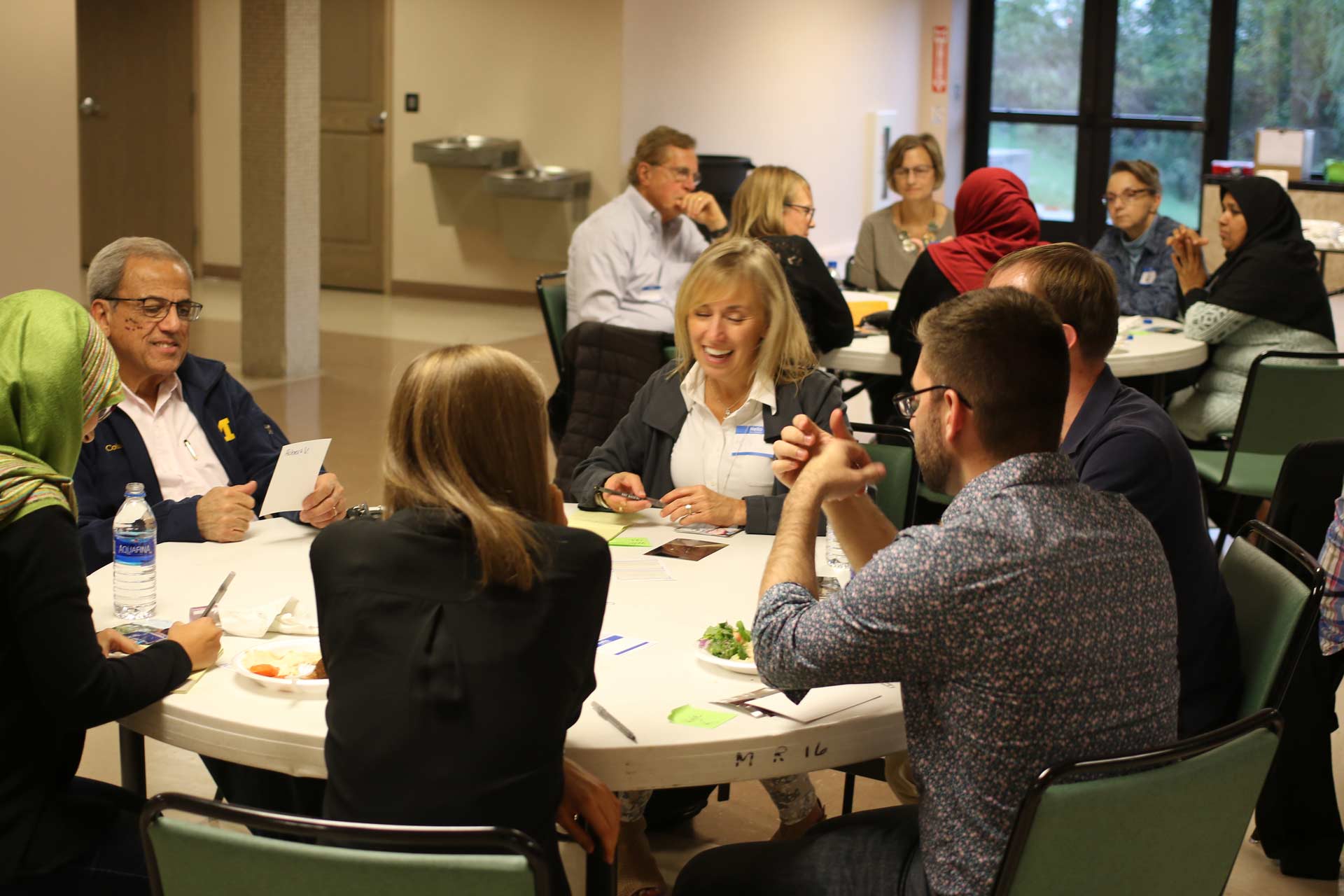Interfaith Photovoice
Interfaith Photovoice facilitators working with local faith partners and participants in the United States and internationally
Website
© Interfaith Photovoice workshops
Formed in 2017 by Roman R. Williams, PhD, against the backdrop of increasing political polarisation and anti-Muslim sentiment in the USA, Interfaith Photovoice brings together people of different faiths and beliefs to develop understanding and empathy through conversations about photographs they have taken. While the Interfaith Photovoice method is customised to each group, in a typical project, a group of mixed-faith participants comes together over a number of sessions to discuss photographs that they have produced in response to a series of prompts:
1. What do your religious beliefs, practices, and values look like in everyday life?
2. What challenges do you face in your community because of your beliefs, practices, and values?
3. What would you like to change about your community to make it a better place for people of all religions?
Sitting at tables in small groups of four to eight people, participants take turns to share their images and tell the stories behind them. They listen, ask questions, and make observations about each other’s’ images. The sequencing of the photo prompts encourages participants to identify commonalities and shared experiences, needs, and concerns. A key starting point is to gain insights into each other’s lives, daily practices, and values and to find points of commonality, mutual concerns, and aspirations that build relationships and trust before discussing more sensitive and critical issues and trying to forge a shared sense of what change might look like. In their final meetings, participants curate a collection of photos that can be used in an exhibition to share the collective experience and insights of the group with their broader community.
Interfaith Photovoice has conducted projects in conjunction with local faith partners across the USA and internationally. The sessions create safe relatively neutral spaces in which people see through each other’s eyes and learn on an equal footing about each other’s’ daily practices, challenges, and hopes, building knowledge and points of connection that generate empathy and solidarity. The method is rooted in contact theory, which hypothesises that prejudice and conflict between different groups can be reduced if members of the groups interact with each other. The photographs work to create encounters, to fill in the blanks and to build bridges between people that would not ordinarily meet in their daily lives. The images act as props for the participant, allowing them to set the parameters of what they want to talk about and share with others.

© Interfaith Photovoice workshops
‘Photographs shared across interfaith differences can be disruptive of conventional and experiential knowledge… Seeing and hearing about someone else’s photos invites participants to step back from their everyday lives and to see the world from a new perspective’.
Interfaith Photovoice

